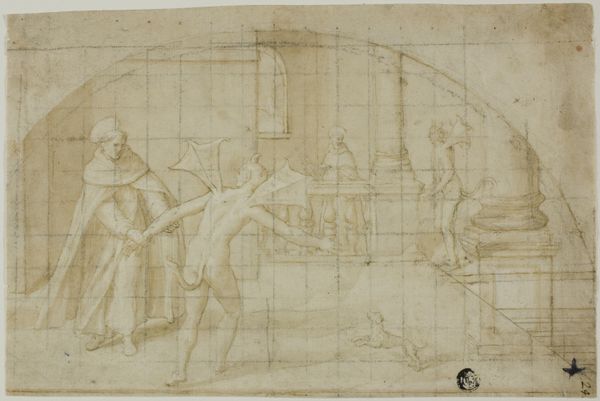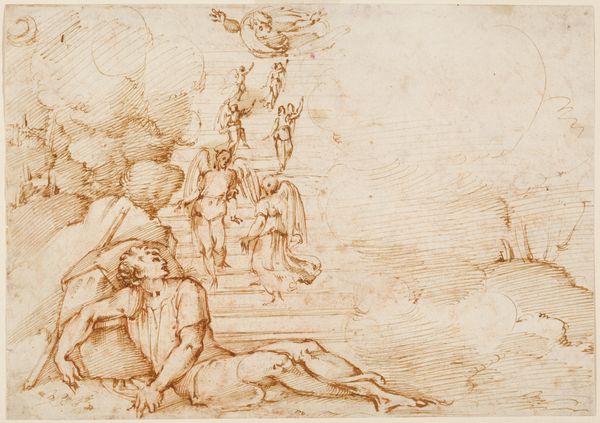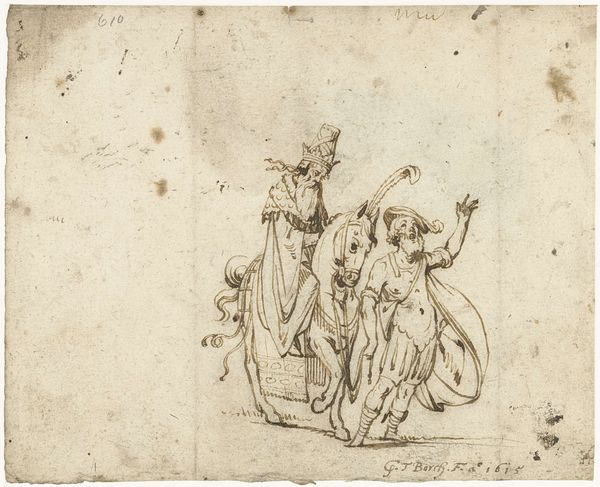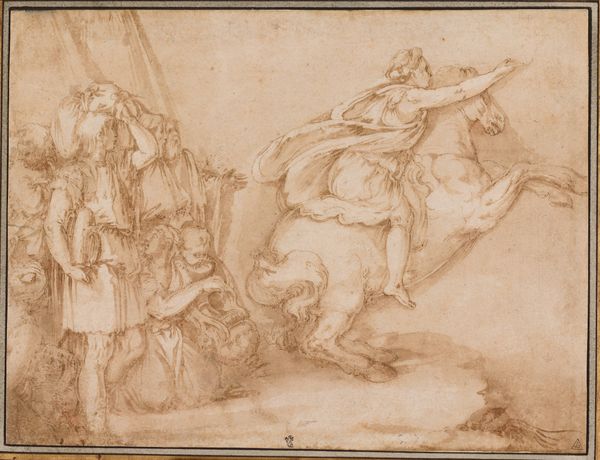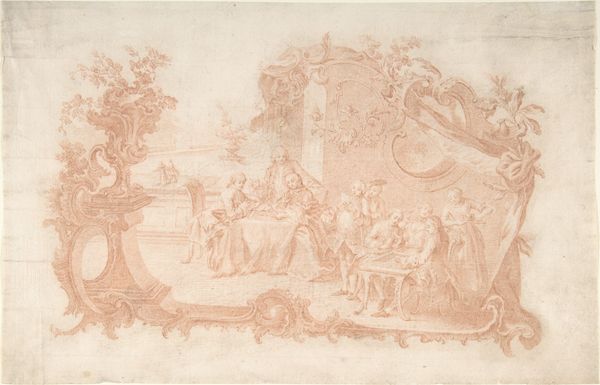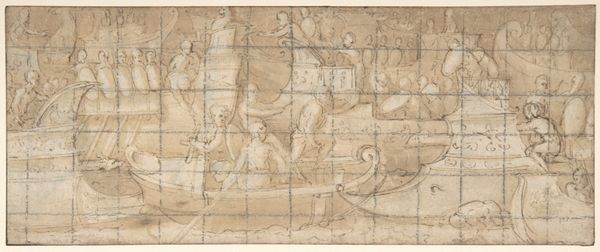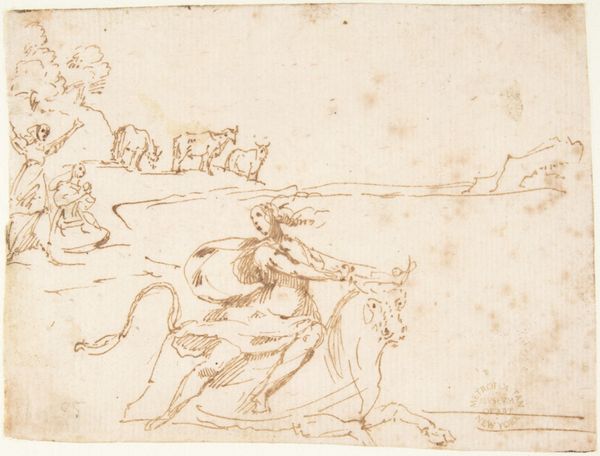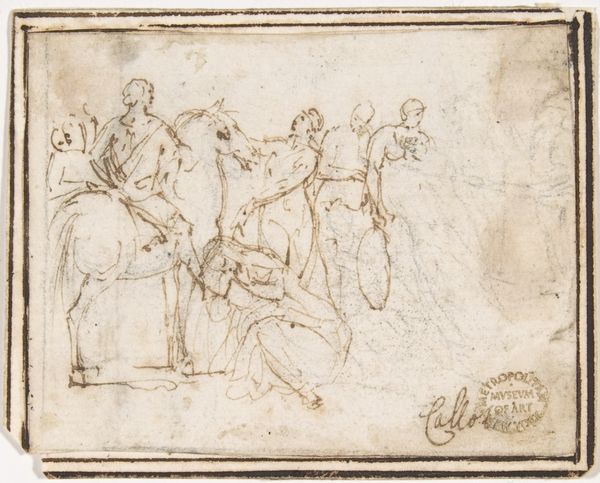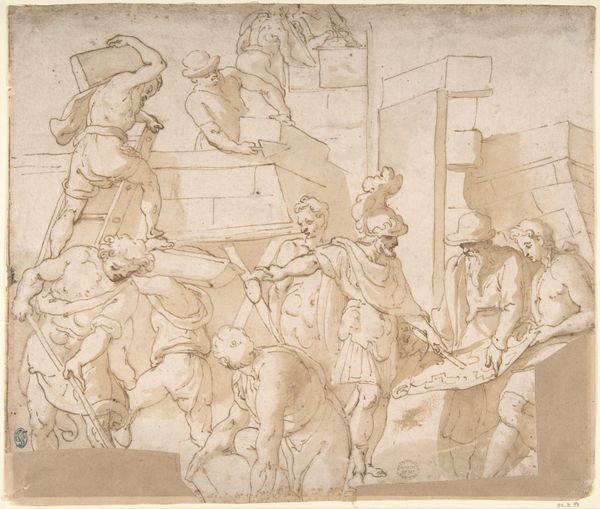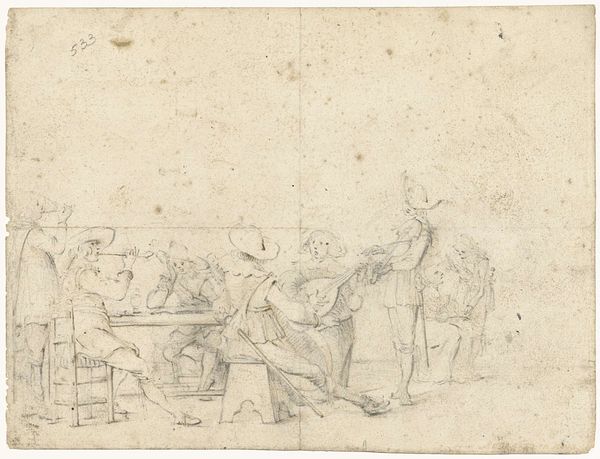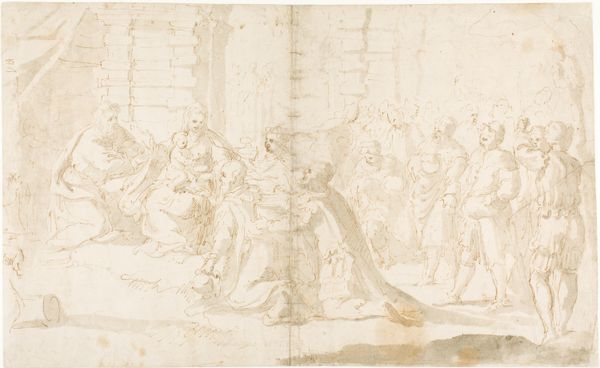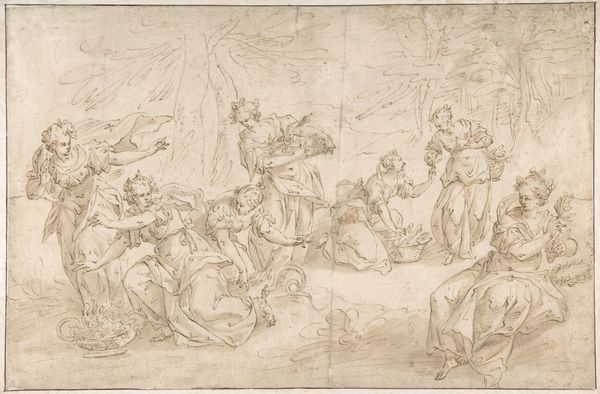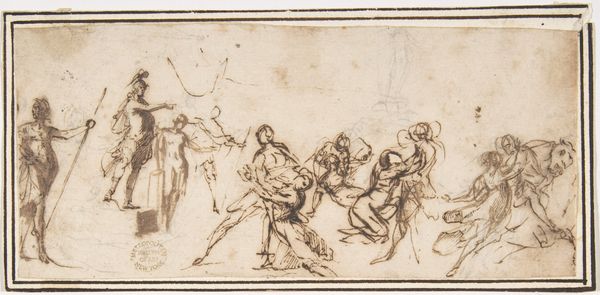
Dock Scene (recto); Two Sketches of Male Figures (verso) 1660 - 1664
0:00
0:00
drawing, paper, chalk
#
drawing
#
baroque
#
landscape
#
etching
#
figuration
#
paper
#
personal sketchbook
#
chalk
#
sketchbook drawing
#
history-painting
Dimensions: 275 × 414 mm
Copyright: Public Domain
Editor: This sketch, "Dock Scene," is by Guillaume Courtois, made around 1660 to 1664, using chalk on paper. There's an energetic quality to the lines that really conveys movement and activity in the dock. What do you see in this piece, especially given its preliminary nature? Curator: Well, it strikes me first as an index of labor. The visible hand of Courtois, through the rapid chalk strokes, reveals the initial stages of artistic production. Consider the socio-economic context: who would have had the luxury to produce such sketches? Was this a study for something larger? The verso may give us a clue to the artist's interests... History painting, perhaps. What might it tell us about 17th-century patronage and workshop practices? Editor: That's fascinating. I was focusing on the composition and the figures themselves, but thinking about the labour involved makes me reconsider the whole scene. It looks spontaneous, but each line was intentional labour. The existence of this artwork is a result of complex structures of support. Is there an intended connection here between the figures on the dock and the manual labour that makes artistic creation possible? Curator: Precisely. And note the materials: chalk and paper. These were not always readily available. Access to them reflects the artist's place within a system of production and consumption. The Baroque period valued grandeur, yet here we see a humble material record of its genesis. Editor: So it's not just about the beautiful finished artwork in the palace, but also about the workshops and economies that facilitated those masterpieces. The discarded sketches, then, become valuable records of art making as labor, in addition to their potential as preparatory works. Curator: Exactly. Examining the 'how' and 'why' of art making unveils a richer, more nuanced story than simply appreciating the 'what.' This 'dock scene' becomes a window onto the material conditions of artistic production itself.
Comments
No comments
Be the first to comment and join the conversation on the ultimate creative platform.
